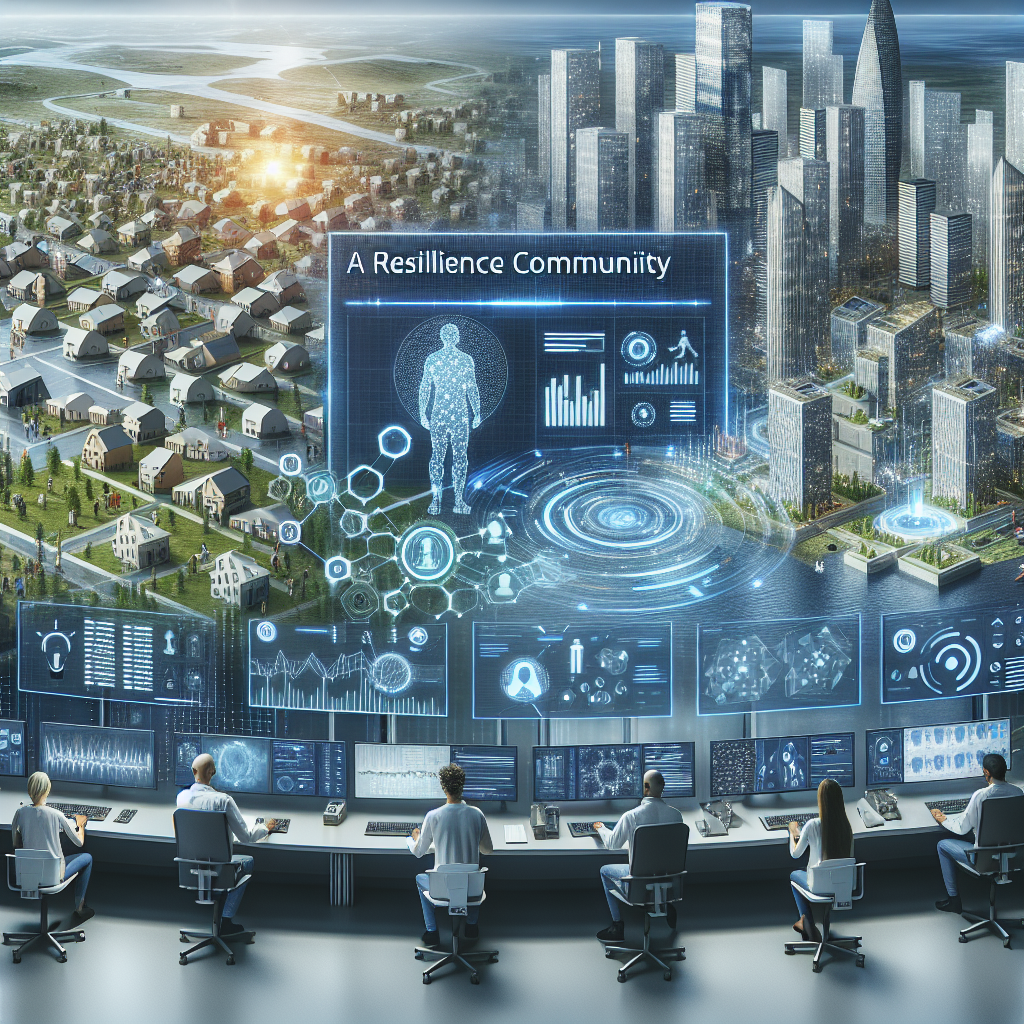AI-Driven Design Solutions for Resilient Communities
In recent years, the world has seen an increase in natural disasters and other unforeseen events that have had devastating impacts on communities worldwide. From hurricanes and earthquakes to pandemics and wildfires, these disasters have highlighted the importance of resilience in communities to ensure they can bounce back quickly and effectively in the face of adversity.
One key aspect of building resilience in communities is through the use of AI-driven design solutions. These solutions leverage artificial intelligence (AI) technologies to help communities better prepare for and respond to disasters, ultimately making them more resilient in the long run. In this article, we will explore the role of AI-driven design solutions in building resilient communities and how they can help in creating a safer and more sustainable future.
Benefits of AI-Driven Design Solutions for Resilient Communities
AI-driven design solutions offer a wide range of benefits for communities looking to build resilience against various threats. Some of the key benefits include:
1. Early warning systems: AI can be used to analyze data from various sources, such as weather patterns, seismic activities, and social media, to detect early warning signs of potential disasters. By providing communities with timely alerts, they can take proactive measures to mitigate risks and protect their residents.
2. Predictive modeling: AI can also be used to create predictive models that simulate the impact of disasters on communities. By analyzing historical data and running simulations, communities can better understand the potential risks they face and develop effective response plans to minimize damages.
3. Resource optimization: During a disaster, it is crucial for communities to allocate their resources efficiently to maximize their impact. AI-driven design solutions can help communities optimize their resource allocation by analyzing real-time data and providing recommendations on where resources should be deployed.
4. Infrastructure resilience: AI can play a key role in designing resilient infrastructure that can withstand disasters. By analyzing structural data and using predictive modeling, AI can help communities build stronger and more durable buildings and infrastructure that can better withstand the impact of disasters.
5. Community engagement: AI can also be used to engage with communities and involve residents in the resilience-building process. By using AI-powered chatbots and virtual assistants, communities can provide information and resources to residents, answer their questions, and gather feedback to improve their resilience strategies.
Case Studies of AI-Driven Design Solutions in Action
Several communities around the world have already started implementing AI-driven design solutions to build resilience against disasters. One such example is the city of Amsterdam, which has been using AI to predict and prevent flooding in low-lying areas. By analyzing real-time data from sensors and weather forecasts, the city can detect potential flood risks and take preventive measures such as closing flood barriers and activating pumps to protect vulnerable areas.
Another example is the use of AI in wildfire detection and prevention in California. By using satellite imagery and machine learning algorithms, researchers have developed AI-powered systems that can detect wildfires in their early stages and alert authorities to take immediate action. This has helped in reducing the spread of wildfires and minimizing damages to communities in high-risk areas.
FAQs
Q: How can AI-driven design solutions help in building resilient communities?
A: AI-driven design solutions can help in building resilient communities by providing early warning systems, predictive modeling, resource optimization, infrastructure resilience, and community engagement. These solutions leverage AI technologies to analyze data, simulate disasters, optimize resources, design resilient infrastructure, and engage with communities to better prepare for and respond to disasters.
Q: What are some of the challenges in implementing AI-driven design solutions for resilient communities?
A: Some of the challenges in implementing AI-driven design solutions for resilient communities include data privacy concerns, lack of technical expertise, high costs of implementation, and potential biases in AI algorithms. Communities need to address these challenges by ensuring data privacy, investing in training programs, securing funding for AI projects, and regularly reviewing and updating AI algorithms to minimize biases.
Q: How can communities ensure the ethical use of AI-driven design solutions in building resilience?
A: Communities can ensure the ethical use of AI-driven design solutions by establishing clear guidelines and regulations for AI deployment, conducting regular audits of AI systems to ensure transparency and accountability, and involving stakeholders in decision-making processes. By prioritizing ethical considerations in the use of AI, communities can build trust with residents and ensure the responsible use of these technologies in building resilience.
Conclusion
AI-driven design solutions offer a promising way to build resilient communities that can better prepare for and respond to disasters. By leveraging AI technologies, communities can analyze data, simulate disasters, optimize resources, design resilient infrastructure, and engage with residents to create safer and more sustainable environments. As the world continues to face increasing threats from natural disasters and other unforeseen events, AI-driven design solutions will play a crucial role in helping communities build resilience and ensure a brighter future for all.

